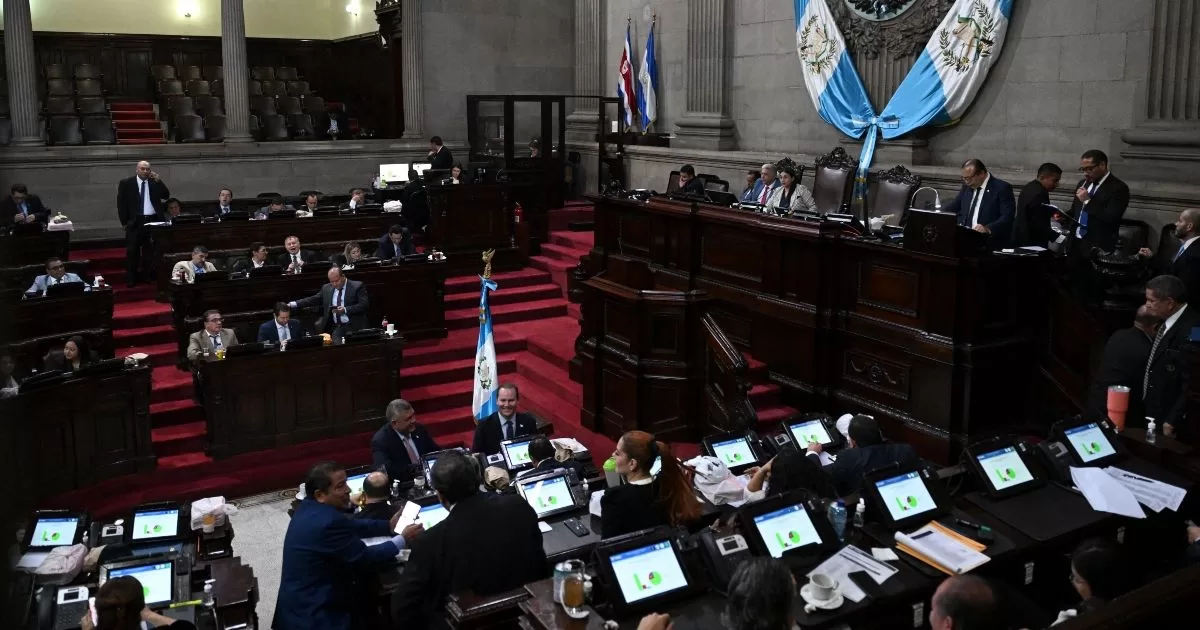The fierce drought generates multiple impacts that stress Sergio Massa’s “plan to arrive”, because it not only affects the reserves due to the lower income of foreign currency from agriculture, but also hit economic activity.
The consultants that at the beginning of the year estimated an economic stagnation for 2023, were recalculating the scenario given the worsening of the drought projections, they significantly cut their forecasts and now calculate a drop in economic activity of between 2% and 4.5%
The Argentine economy registered a growth of 5.2% in 2022 and started this year with slight growth. This week it became known thatl Monthly Estimator of Economic Activity (EMAE) registered a recovery of 0.3% in January compared to December on a seasonally adjusted basis, and an interannual rise of 2.9%.
However, economists assess that it was a “transient relief” and they anticipate that the first quarter will close in decline.
Economic activity: can a recession be avoided?
With the recovery in economic activity in January, four months of negative streak was broken, but economists put this improvement into perspective. In this regard, analysts Facimex Values They argued that the year-on-year growth was affected by a low year-on-year comparison base that played in their favour, and recalled that in January 2022 there was a resurgence of coronavirus infections, fewer business days for the industry, and power outages that affected activity.
And they emphasized that “leading indicators for February provide negative signals” so they expect “the economy to formally enter recession in the first quarter of the year.”
They estimate that the economy will close the first quarter in decline, with which it will enter recession
With the same diagnosis, Lorenzo Sigaut Gravina, Equilibra economist, commented: “We see that the first quarter will end with a slight contraction in seasonally adjusted terms, with which two negative quarters will accumulate. Thus, it will enter a technical recession.
At the same time, Francisco Ritorto, ACM economist, indicated that they project that the first quarter of the year will end with a fall of 0.7% against the three previous months. In his view, “what we are beginning to see is probably the end of the economic recovery trend of the last two years and the beginnings of a recessive phase.”
“We are not exempt from entering a situation of technical recession in the event that the first quarter presents worse numbers than expected,” he said.
For his part, Lautaro Muschet, an economist at the Fundación Libertad y Progreso, assured that the 0.3% growth in January “brings a bit of relief” but “you have to take it with a grain of salt: “When you look at the trend-cycle indicator, you see six consecutive falls . In other words, we cannot speak of a break in the contractive trend. Even with the January data, economic activity returned to the levels of the first quarter of 2022.”
How does the drought impact the activity?
According to the latest projections from the Rosario Grain Exchange, The drought will imply a loss of foreign currency of US$20,000 million, as a result of the reduction in agricultural exports, and a drop in agricultural production of 35% to 40%. In this sense, a report Analytica estimated that a 35% drop in the harvest “causes a contraction of 2.1 points in GDP”.
An EconViews report states that “drought complicates GDP, the supply of dollars and tax collection this year.” And he indicated that “the countryside directly contributes 8% of GDP and weighs heavily on transportation, which is another 4%”, while recalling that “the droughts of 2009, 2012 or 2018 subtracted between 1 and 2 points to the economy.”

The magnitude of the drop in economic activity in 2023 will depend on the final impact of the drought
“All those years ended in recession. The impact on transportation is difficult to quantify, but in 2009, 2012 or 2018 the biggest year-on-year drop in the sector always occurred in the second quarter, that of the corn and soybean harvest. Fewer tons are also fewer trucks, less gasoline and less consumption in the area,” he stressed.
Isaiah Marini, economist from that consultancy, maintained that the drought will have “a special impact in the second and third quarters, for which we expect a year-on-year drop of around 7.5%.”
“It is that the losses due to the drought will not be limited only to agriculture. Related industries, transport, and regional economies will suffer a direct impact. But also, the lower availability of dollars means that the industry as a whole will face shortages of inputs as import restrictions increase,” he stated.
In turn, the economist Camilo Tiscornia explained that “when the harvest falls, there is a direct impact on the activity of the agricultural sector due to the lower volume of grains that is generated, but there is also an indirect effect on the part of trade.” And he noted that “since there is less availability of grains, The manufacturing industry is also affected in everything related to the production of oil and waste from the food industry”
Tiscornia pointed out that “there are other indirect effects, given that to the extent that the harvest is bad, producers receive less money, spend less, and that impacts the interior of the country, the purchase of machinery suffers, etc.”
The lack of dollars aggravates the situation
For his part, Twisted emphasized that “a context of lack of foreign currency also implies a significant reduction in imports that has an impact in terms of a lower supply of inputs and machinery for the sectors that demand imported material, causing a lower level of activity”.

The lack of dollars affects imports and, therefore, also hits economic activity
With the same diagnosis, Moschet He asserted that “with the passing of the months, the drop in exports will make the lack of reserves that the BCRA has more and more evident and will further deepen import restrictions; this is where the second complication appears that will slow down growth”.
“Imports of capital goods and intermediate goods exceed 50% of the total purchases abroad. If fuels and accessories for capital goods are added to this, the participation exceeds 80%. With this it is evident that in the To the extent that imports are restricted, the industry will be strongly affected and will not be able to grow either,” he predicted.
With the same look, the consultant Ecolatina envisions that “in a context of lack of access to international credit, a level of net international reserves at critical levels and an abrupt drop in agricultural exports expected, deeper measures will be necessary in terms of managing scarce currencies.”
“Despite the efforts to achieve greater foreign currency income from the financial account (OFIs loans, swaps, investments from China, etc.) or the implementation of differential exchange rates that seek to advance the settlement of foreign currencies, a scenario with greater import restrictions becomes the most likely, where it will be difficult to continue prioritizing ‘caring for production dollars’ in a framework in which there is less and less room to implement restrictions. Thus, a greater proportion of industrial sectors will find it difficult to maintain the level of production they want,” he warned.
Economic Activity: what is the projection for the whole year?
The 2023 Budget bill foresees a growth of the Gross Domestic Product of 2%. On the other hand, the consultancies project a fall of between 2% and 4.5% due to the drought, the shortage of dollars and the acceleration of inflation that will continue to exert pressure in the coming months.
Ritorto stated that the worsening of the drought “significantly deepened the reduction in economic growth expected for this year” and said that “the projection was modified as the climatic effect advanced.”

The obstacles to imports also had an impact on economic activity
The economist assessed that “The outlook for 2023 is not very encouraging, considering the problems on the external front added to high inflation, which do not allow a recovery of wages and, thus, of consumption in general”. Faced with this panorama, Ritorto indicated that in ACM they project a GDP contraction for the whole year of 2%.
In Facimex they also revised downward the projection for 2023. They recalculated from -1.75% to -3%, since the drought will have a direct impact of 2 percentage points on GDP through the three main crops.
Marini said that in EconViews they expect “that activity contract 4.5% in the year”while until February the base scenario they forecast was a stagnation of the economy.
Sigaut Gravina stated: “As the year progresses, the damage from the drought and the restrictions on the side of lower currency settlements, therefore fewer imports, will cause the impact on economic activity to deepen, so we project a 3.5% drop.”
In Delphi Investment foresee that “the expected reduction in agricultural exports and its second-round effects, together with higher inflation, would imply a drop in activity close to 2.8% this year in our base scenario”. But they estimate that “in a scenario where there is a discreet adjustment of the official exchange rate, the fall could exceed 3.3%”.
The consultant FMyA it projects a retraction for the year of 3.2% “due to drought, more stocks due to a shortage of dollars and uncertainty due to the elections.” Although he warns that “there are risks that the contraction will be even greater if the drought intensifies more and there is a lack of dollars, which forces production to stop.”

Massa announced a new agricultural dollar to accumulate foreign currency, although economists still foresee more clamps on imports
Did the drought put Massa’s “plan to arrive” in check?
For his part, Tiscornia He maintained that “for now, we are forecasting a 3% floor drop in the economy, but it could be more. It will depend on the harvest and also on the financial mess with which the government arrives at the elections.”
The economist claimed that “The drought jeopardized the plan to get from Massa. If we stop at the end of 2022, when the scope of it was still not clear, the minister had emboldened himself that inflation was falling with Fair Prices, and they even began to curb the official dollar ”
“The drought completely changed their plans because they can no longer delay the official exchange rate so easily, something typical in electoral years, because there are a lack of dollars, the financing of the fiscal deficit is complicated, there is pressure on the exchange rates, they have to control plus imports then the economy goes into recession. It got complicated everywhere. He put the plan in check,” he judged.
Twisted agreed that “the drought produced a check in the economic plan, with the agricultural production that collapsed, a kind of ‘domino effect’ is formed, and in addition, it affects the income of the Government through withholdings, further aggravating the situation.
For Marini“the drought strongly complicates Massa’s ‘plan to arrive’, although it does not necessarily put it in check. In the coming months, surely, we will see a series of short-term measures that will allow the Government to arrive without a lack of control of the gap or an abrupt devaluation; the new agricultural dollar is an example of this”.


